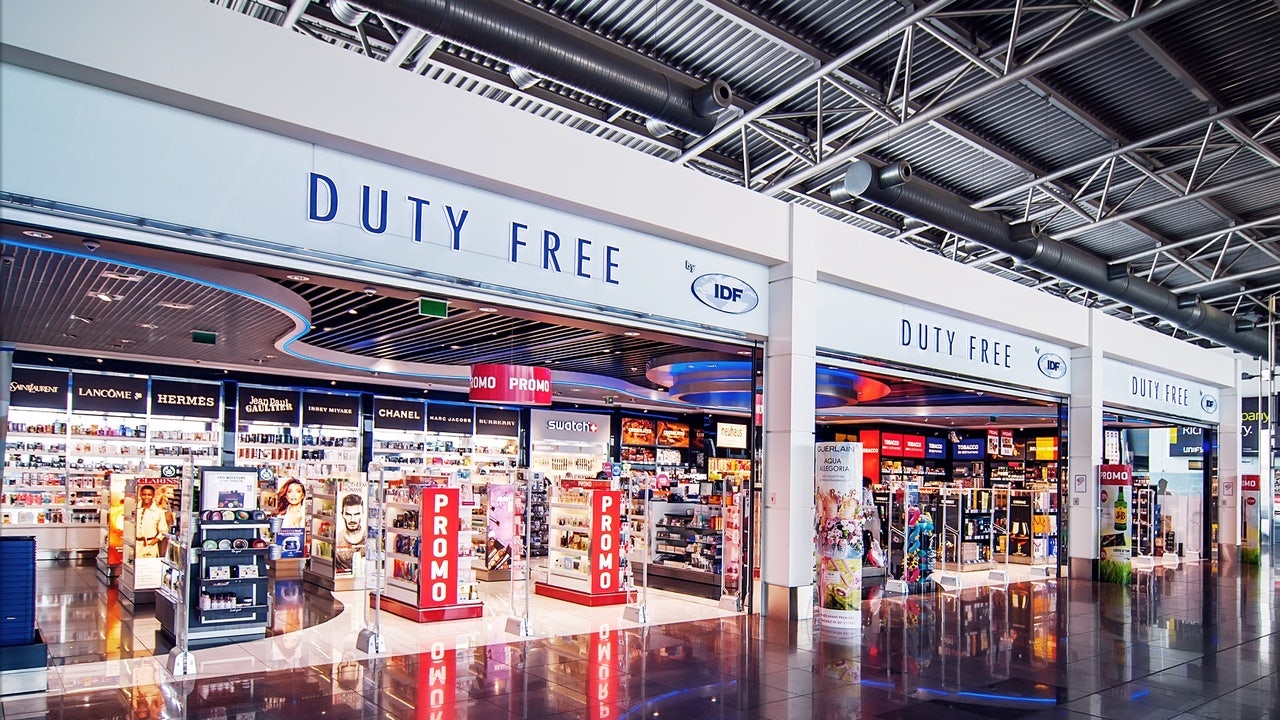Key Takeaways:#
- Brands should keep exploring new ways to provide more commodity choices to travel retail consumers, which will be China Duty Free Group’s focus in 2022 and beyond.
- In 2022, the travel retail industry should pay attention to emerging market opportunities in the newly opened duty-free areas like Qianhai Pilot Area, Henan Pilot Free Trade Zone, and Pudong New Area.
- To further its retail growth beyond the pandemic, China wants Hainan to become a key holiday destination for both the Chinese and overseas visitors.
With China becoming a hotbed for global luxury brand sales, we are seeing another trend shape up there: its booming travel retail market, which the country has successfully developed like no other. It has generated massive revenue through travel retail and has tapped into this market with a full-fledged plan.
Domestic aviation, travel, and tourism are benefiting greatly from the plan, with the success of travel retail most obvious at airports, on cruises, and in downtown locations and border shops where luxury brands place their flagship stores to serve travelers.
In China, Hainan has become a shining example of a duty-free capital. However, its growth was only made possible through a well-timed government policy: a dual-cycle approach that maximizes domestic consumption and repatriates money from Chinese travelers who usually spend overseas.
As long as the pandemic wreaks havoc on all aspects of life globally, especially in Europe and the US, Chinese consumers will prefer to stay at home and shop domestically for safety reasons, where their favorite Western luxury brands are eager to set up stores.
This trend has been bolstered by the Chinese government’s introduction of last year’s new offshore duty-free regulation, which increased the annual duty-free buying allowance from 4,700 to 15,600 (30,000 RMB to 100,000 RMB) — a decision welcomed by the business community and Chinese consumers alike.
According to a report by Goldman Sachs, the prospects for the global travel retail industry are bright, as they expect to see a massive jump from today's 89 billion to 149 billion by 2025. And Chinese consumer spending is an integral part of this growth, with their spending expected to increase from 48 to 56 percent by 2025. If China successfully attracts even a portion of this spending in its backyard, it would mean massive growth for its local industry.
The trends coming to China’s travel retail sector in 2022#
The CDFG (Chinese Duty Free Group) has been working relentlessly to create a positive scenario for China's travel retail. In the recently concluded Virtual Travel Retail Expo organized by The Moodie Davitt Report, CDFG president Charles Chen outlined the organization's ambitious plans for China's travel retail in 2022 and beyond. “I believe brands should come up with greater options concerning products on offer in the Chinese travel retail market," he said. "And another important thing I would like to see is more goods tailored primarily for to that market.”

Chen also emphasized that brands should keep exploring new ways to provide more commodity choices to travel retail consumers — and that will be their focus.
Shedding more light on this topic, Jason Cao, founder of Amberich (HK) International Ltd. and DFE (the first integrated professional platform for the travel retail industry in China), said: "In 2022, the travel retail sector in China will kick off with a bang. First, the outlying islands will continue to flourish as an appropriate destination for duty-free market activities and undoubtedly be the major contributor to China’s duty-free sales. Since COVID-19 remains a big concern, there is a high probability that Chinese consumers’ domestic travel will not be fundamentally affected."
In this positive scenario, Hainan's duty-free goods will keep attracting consumers from all over the country and motivate them to travel and shop there. According to data released by Haikou Customs in the first half of this year (from January to June 2021), the amount of duty-free shopping on Hainan’s offshore islands came to roughly 4.2 trillion (26.77 billion RMB).
“I personally think the basic performance we’ve seen in the first few months of the second half and the excellent result during the National Day holiday suggests that there will not be a big problem in achieving sales of 9.4 billion (60 billion RMB) this year,” Cao added. “If everything goes well until the end of this year, the sales figures in travel retail will amount to 18.8 billion (120 billion RMB).”
"Second, due to how severe the COVID-19 pandemic is in the West today, inbound and outbound tourism will not be fully opened in 2022, so businesses that rely on inbound and outbound tourism, especially the airport duty-free commerce, cannot be fully restored. Based on the same reason, the duty-free shops in the cities that are particularly open to inbound and outbound passengers for scheduled shopping will not have far too many performance opportunities in 2022, regardless of whether the new policy is implemented or not."
"And finally, in 2022, the travel retail industry should pay attention to emerging market opportunities in newly opened areas by the Chinese government, such as the Qianhai Pilot Area, the Henan Pilot Free Trade Zone, and the Pudong New Area. These new concept zones will offer a new push to travel retail in China. Additionally, we have good reason to believe that the retail formats will be consistent with regional opening strategies.”
For luxury brands making a foray into China in 2022, they must realize that Chinese consumers are more interested in buying from duty-free zones. “Airports will remain strong junctions for brand competition,” Cao said. “The consumption characteristics of duty-free channels and the degree of brand recognition are often a big factor for brands to judge the potential of the Chinese market."
China's new duty-free policy also expanded duty-free product categories to 45 types, including jewelry, watches, luggage, tablets, cosmetics, and more. The list added mobile phones, health foods, and handheld (including car-mounted) wireless telephones, among other categories.
Meanwhile, travel retail will still be focused on a domestic market, and several luxury brands have already accelerated plans to open in key travel retail areas. Whether they open permanent stores or commit to popups, these destinations for travel shopping will be key opportunities for brands in China.
Shanghai has jumped on the bandwagon#
To ensure travel retail remains highly lucrative in China, Shanghai has decided to sell duty-free goods as part of its five-year economic plan, allowing the city’s high-end shopping malls, airports, hotels, and tourist hotspots to offer this benefit to its customers.
But regardless of what happens in the Chinese travel retail market, the CDFG will be ready to tackle those concerns. One is related to the opening of international air travel in China, which could slow down Hainan’s growth as a duty-free paradise. However, this scenario is unlikely, said CDFG president Charles Chen. “Now we want to see Hainan become a key holiday destination for both the Chinese and overseas visitors, continuing its growth in travel retail,” he explained.
There has been a fundamental shift in consumer behavior and how consumers are spending on luxury goods due to China's borders being closed since March 2020, with Chinese consumers spending more than ever on luxury at home. But many believe this trend is here to stay, even after the country’s borders open.

